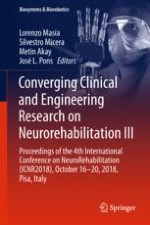2019 | OriginalPaper | Buchkapitel
Wearable Devices and Virtual Reality for Neurorehabilitation: An Opportunity for Home Rehabilitation
verfasst von : Giovanni Morone, Simone Girardi, Sheida Ghanbari Ghooshchy, Marco Iosa, Stefano Paolucci
Erschienen in: Converging Clinical and Engineering Research on Neurorehabilitation III
Aktivieren Sie unsere intelligente Suche, um passende Fachinhalte oder Patente zu finden.
Wählen Sie Textabschnitte aus um mit Künstlicher Intelligenz passenden Patente zu finden. powered by
Markieren Sie Textabschnitte, um KI-gestützt weitere passende Inhalte zu finden. powered by
